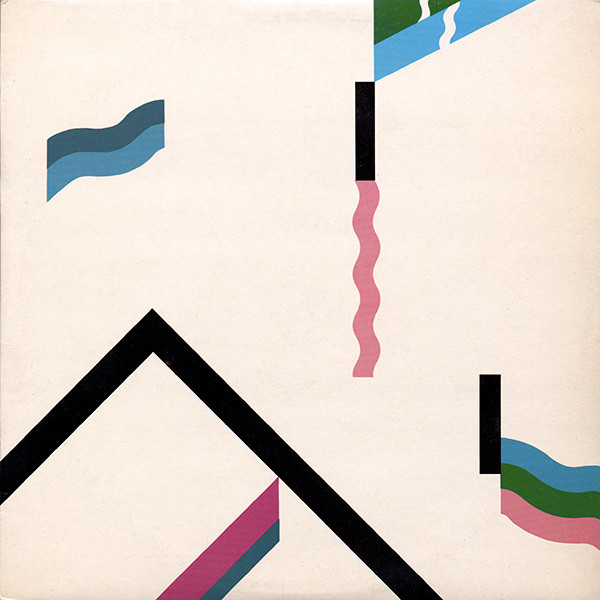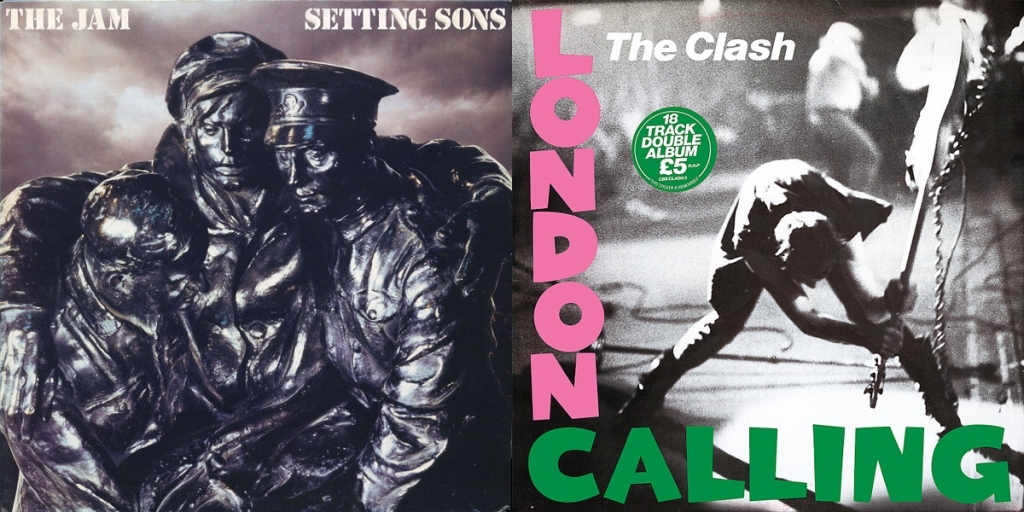1979 was definitely the year that the post-punk flower bloomed the brightest. Onwards and upwards.

I ended my survey of 78 with Chic, and I begin 79 with the same set of musicians and writers, just a different set of singers. Sister Sledge had hardly set the world on fire with their first two albums. Bring on Edwards, Rodgers and Thompson and the result is pure magic. Each of the four sisters sang at least one lead, with Kathy taking four including three of the four monster singles. But this is far from a hits and filler affair. All eight tunes could’ve been hits easily. For me “Lost in Music” is almost biographical!

Exponents of radical politics both, only one signed with a major label heavily involved in the defence industry. Despite the inherent hypocrisy, Entertainment is by far the best set of songs Gang of Four ever put out. The Pop Group were more paranoid, perhaps, but the music was as radical as the message, combining free jazz, funk, dub and punk into something both avant-garde and danceable, while Mark Stewart howled about the injustices of the world. More than forty years on, Entertainment feels like nostalgia, Y feels even more relevant than ever.

I walked past a branch of H&M before Christmas and they had Joy Division tee shirts in the window. I cannot quite process how the band I worshipped as a teenager have become a throwaway fashion item. Still, the music is what counts, not the thin veneer of cool that still surrounds it, and this is still a journey into the centre of the city in the night.

The third of the Harvest trilogy, the songs were getting longer, the arrangements more complicated, and the sonics darker. Pink Flag may have been more influential, but 154 is the band’s masterpiece. It has pop, it has horror, it has industrial noise, but it all fits together seamlessly.

Marianne Faithfull made the journey from swinging sixties pop icon, to homeless addict, but she also came out the other side. And the good thing about this record isn’t just that it was a fine piece of work, but that it made her popular again. A lot is down to the “Ballad of Lucy Jordan” where the juxtaposition of her ravaged voice and the anaesthetic synth lines combine to make a horrific, and truly believable dream world.

Quite how Two Tone attracted National Front bell-ends seems weird, but there was a lot of violence in the early days of Specials and Madness gigs. Yet the message being put across was one of unity in the face of the very real attacks that were being made on the working class during the Thatcher years. This wasn’t student union politics, but the reality of shitty towns riddled with unemployment and hopelessness. The thing is, though, you’d never get that from the music which was always celebratory, even if Terry Hall couldn’t help looking like a wet weekend in Warrington all the time.

The class of 77 peaked with this pair of classic albums. Setting Sons was, very loosely, a concept album about the inequities of the British class system. London Calling was just a grab bag of very, very good songs. These are hardly records that need an introduction I wouldn’t have thought.

The packaging may have been a gimmick, but it needed the wide grooves of a twelve inch single to contain the bassquakes. Lydon is only ever as good as his collaborators, hence the Pistols without their only musician, Matlock, were total mince. Here though, with Wobble providing the framework, and the mercurial Levene snaking through the poles, even the fact that they used three different drummers didn’t matter. It still sounds astonishing.
Not just those, but these too! Bowie completed the Berlin trilogy with the easy-to-admire, but difficult-to-love Lodger. With Music for Airports, his old mucker Eno set out on a mission to make airports sound like minimalist art galleries rather than the antiseptic, crowded cattle markets they really are. And Eno associates Talking Heads took giant strides with the beguiling Fear of Music. Japan began the journey from glam rock wannabes to chic dandies with Quiet Life. Almost there, but not quite yet. Magazine sharpened the edges a bit with Secondhand Daylight, whilst Tangerine Dream returned to form (briefly) with the epic Force Majeure. Yellow Magic Orchestra’s Solid State Survivor won awards galore in Japan, and so it should have. Sixties survivors Joni Mitchell and Neil Young came up with very different records. Mingus was a homage to the jazz bass legend, and was a long, long way from singer-songwriter confessionals. Rust Never Sleeps was a schizophrenic split between pummelling rock, and acoustic vignettes. With “Thrasher” and “Powderfinger” it had two of Neil’s best songs. Finally a trio of totally unrelated LPs. Armed Forces by Elvis Costello, Survival, by Bob Marley and the Wailers, and Highway to Hell, Bon Scott’s last record with AC/DC.
